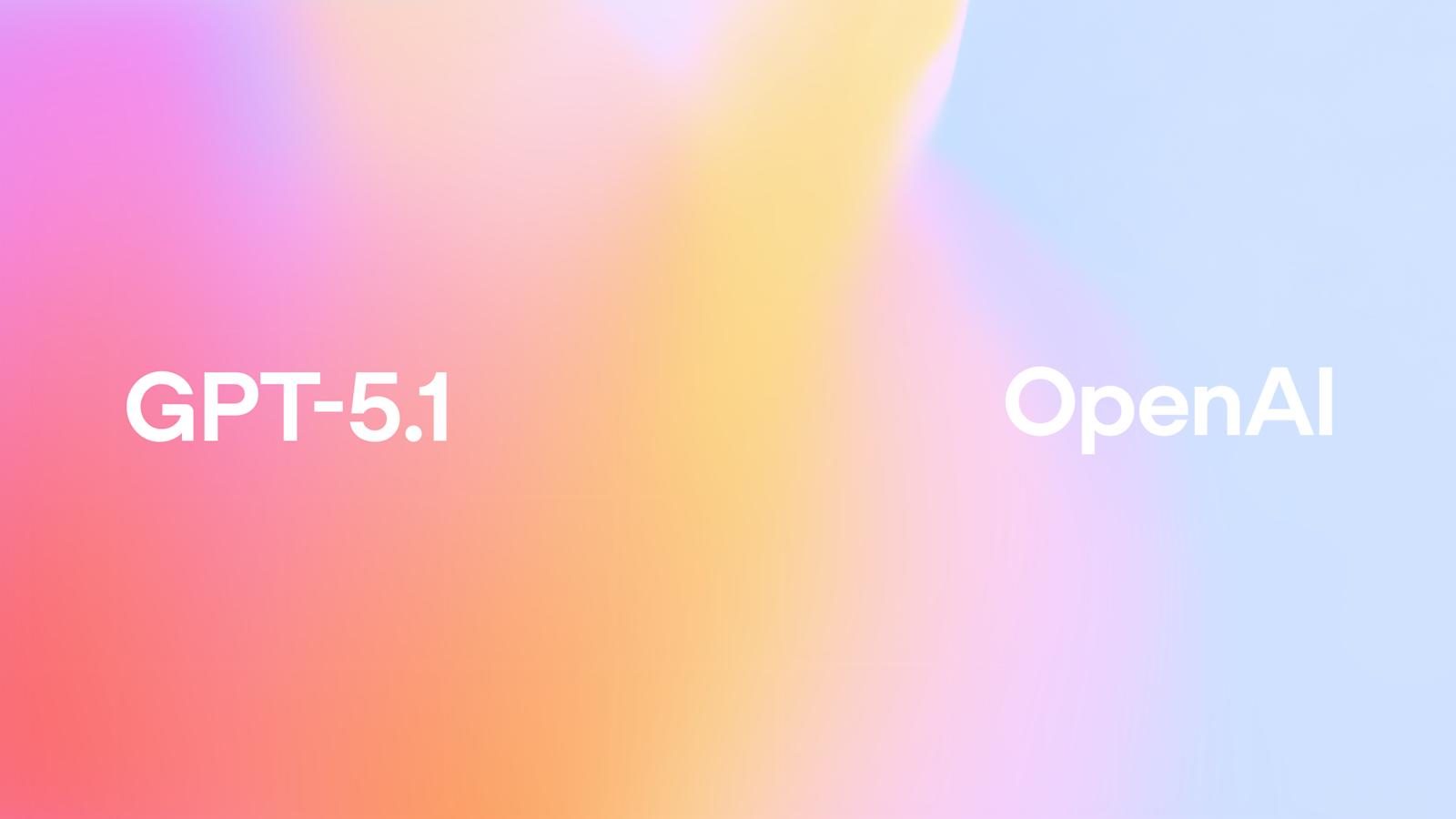GPT-5.1 has been officially launched as one of the most significant updates in the evolution of OpenAI's language model. In its latest release, the company describes GPT-5.1 as a model that smarter, faster, and warmer While interacting with users. This update addresses the biggest criticism of the previous generation, which was deemed too rigid and less personal.
As a strategic step, GPT-5.1 brings technical improvements as well as a more natural conversational experience. This progress marks OpenAI's efforts to bridge the gap between high computational capabilities and human-centered interactions that are increasingly demanded by users worldwide.
In addition, this model introduces two distinct variants, improved instruction-following, adaptive speed, and more in-depth style personalization. That approach shows that the AI industry today is not only focused on capabilities, but also The comfort and quality of the conversation..
GPT-5.1 and the Evolution of Two Variants of the New Model
OpenAI introduces two main variants of GPT-5.1: instant dan ThinkingThese two models are designed for different usage scenarios, providing flexibility to users—from business and education to creative needs.
Varian Instant is available with a focus on speed. Meanwhile, Thinking is oriented toward deep analytical capabilities. Both show how GPT-5.1 now approaches the way humans adjust their level of thinking based on the complexity of the problem.
Instant Variant, GPT-5.1 that is Faster and More Conversational
The Instant model is enhanced with a faster response and a higher level of warmth than the previous version. In testing by various technology media such as Decrypt, Instant is regarded as an ideal model for brainstorming, rapid interactions, and everyday use.
Users also report that conversations with this model feel more natural. This warmth aligns with OpenAI's statement that users want AI that is not only smart, but also pleasant to talk to. This decision has become an important step in bringing AI toward a more human-like personal assistant.
In addition to speed, Instant also inherits features. adaptive reasoning, which enables the model to choose the level of computation according to needs. If the question is simple, the response is given quickly. If it's complex, the Instant model can still improve accuracy without drastically sacrificing speed.
Variant Thinking, GPT-5.1 for Multi-Step Tasks
Varian Thinking offers a different approach: a focus on depth, precision, and multi-step capabilities. In the report Search Engine JournalThinking is said to be able to adjust the processing duration based on the level of task difficulty.
For light tasks, Thinking can operate nearly twice as fast as its predecessor. However, for serious issues—such as debugging, multi-layered logic, or technical projects, this model may prolong processing time in order to produce more mature answers.
Professional users such as developers, data analysts, and researchers are the primary targets for using this model. The balance between adaptive speed and accurate results makes the Thinking model the go-to for serious tasks.
Additionally, Thinking reduces misinterpretation errors in complex instructions, especially when dealing with code, formulas, or lengthy procedural steps.
Enhancement of Adaptive Reasoning and GPT-5.1 Efficiency
Adaptive reasoning has become the core of GPT-5.1's innovation. This feature allows the model to detect the complexity of a question before determining how deeply it thinks. Thus, users have a more efficient experience and do not always have to wait long.
This improvement is not only felt by individual users, but also has an impact on the performance of businesses that use AI for automation, analytics, and customer support.
How does GPT-5.1 recognize the level of complexity?
GPT-5.1 can analyze the characteristics of long questions, context, logical patterns, and variables to determine the computational intensity. This technology is similar to how humans determine how seriously they should think about a problem.
When the question is simple, the model executes quickly. However, for analytical problems, GPT-5.1 automatically increases the level of reasoning without being prompted. This yields an ideal balance between speed and quality.
In addition, this feature helps reduce the server's computational load, making energy usage more efficient. On a global scale, this efficiency is important for the sustainability of AI technology.
More Stable Performance for Heavy Tasks
In previous generations, heavy tasks often caused the model to act too abruptly, resulting in answers that were less mature. GPT-5.1 fixes this behavior. Model Thinking automatically extends the reasoning process to produce more neat and structured answers.
Test results from various analysts show that the Thinking model is now more stable for tasks that require layered logic, such as business decision-making, technical planning, or academic analysis.
In addition, GPT-5.1 minimizes brief responses in contexts that require elaboration. This feature seems very useful in code analysis, market research, and the creation of strategic reports.
GPT-5.1 Personalization and Warmer Communication Style
One of the updates that users value most is the far more flexible style controls. GPT-5.1 can adjust tone, the length of the answer, the level of warmth, up to the number of emojis.
This step reinforces the impression that AI is not just a technical tool, but also a conversational partner capable of adapting to situations.
A richer and more dynamic style preset.
OpenAI introduces several new presets such as Professional, Candid, and Quirky. Users can directly change this style even when the conversation is already underway.
In a business context, a preset such as Professional helps with drafting reports or formal emails. Meanwhile, the Candid and Quirky presets are suitable for casual conversations, creative content, or social interactions.
The biggest advantage of this new system is flexibility. Users are no longer limited to a uniform style as in the previous model.
In addition to presets, there are granular controls to adjust how formal, warm, or concise the model speaks. Users can even adjust the intensity of humor or informal expressions.
The Impact of GPT-5.1 Warmth on the User Experience
Various media such as VentureBeat reports that GPT-5.1 is more 'enjoyable to talk to'. This warmth is not merely the addition of emojis or a friendly tone, but an improvement of the dialogue structure to sound more natural.
The model is now able to understand the emotional context, adapt to users' needs, and respond with a higher level of empathy. This makes AI feel more alive and relevant in daily use.
In the business world, this warmth also increases user engagement in customer service, chatbots, and even community interactions. A more humane experience often determines user loyalty in the digital era.















